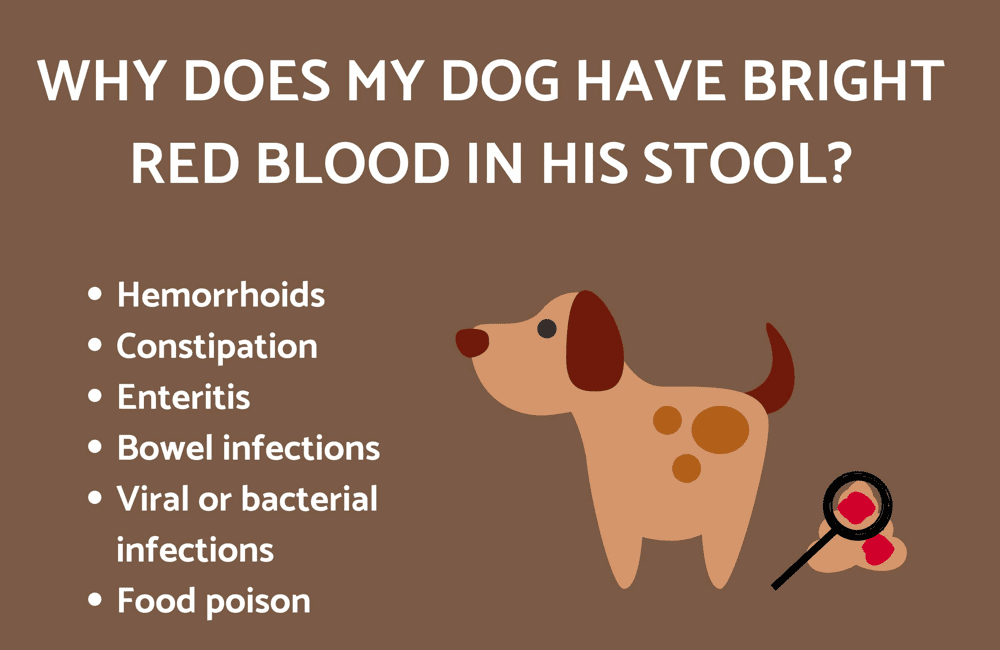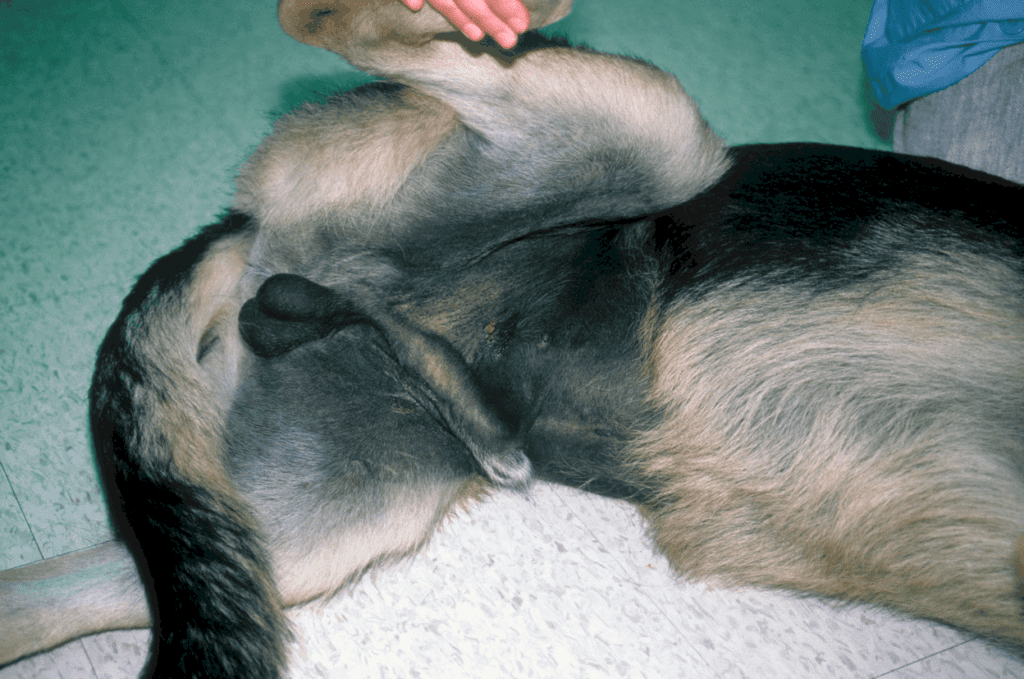Blood in the stool can be from various causes. It is important to identify the color of the blood. Bright red blood in the feces is hematochezia. This is an indication of bleeding in the lower intestines. If the blood color is dark, or the feces is black, this is melena and is an indication of problems in the upper digestion system and is potentially much more serious.

Hematochezia
The presence of hematochezia may be symptomatic of either a minor problem or a potentially serious problem in your dachshund. One occurrence of hematochezia may be a minor and transient event. Repeated or persistent hematochezia is more serious and should not be ignored.
General Causes of Hematochezia
- Infectious agents, such as bacteria, protozoa, viruses, and intestinal parasites
- Dietary intolerance/allergy/indiscretion
- Cancer (neoplasia) of the lower bowel
- Polyps (benign masses) in the colon or rectum
- Inflammatory bowel diseases, such as colitis
- Trauma to the lower bowel or anal area
- Clotting disorders (coagulopathy)
- Intussusception (the telescoping of one part of the bowel into another)
- Miscellaneous diseases of the anus, rectum, and colon
What to Watch For
- Bright red blood in the feces
- Possible straining to defecate as if constipated
- Increased number of bowel movements
- Possible other systemic signs of illness, such as excessive drinking, urinating, vomiting and diarrhea, lethargy, poor appetite, weight loss
- Your dachshund may not have any other clinical signs
If your dachshund has symptoms of hematochezia the following diagnostic tests may be required by a vet: rectal examination, complete blood count (CBC— requires a blood withdrawal), completion of a biochemical profile, urinalysis, examination of fecal matter, coagulation profile, abdominal X-rays (radiographs), abdominal ultrasound, or a colonoscopy.
Melena
Melena usually indicates the presence of significant upper gastrointestinal problems, although occasionally other diseases (such as clotting disorders, ingestion of blood, etc.) unrelated to the gastrointestinal tract may present with melena.
Melena is usually the result of bleeding in the upper gastrointestinal tract (esophagus, stomach, or small intestine). As the blood moves through the gastrointestinal tract, it is digested by normal digestive juices. The digested blood appears black or tarries in the bowel movements. Melena also can be caused by digestion of blood from other sources such as swallowing blood from the mouth or blood coughed up from the lungs and licking blood from a wound.
The classic appearance of melena is black, shiny, sticky, foul-smelling feces with a tarry consistency. Melena may be seen as the only clinical sign, although other systemic signs often accompany it.
A careful history and thorough physical examination of dachshunds exhibiting this disease are essential. The presence of melena generally warrants hospitalization, extensive diagnostic testing, and supportive care. It is best to determine the underlying cause and treat the specific problem.
The causes of the bleeding that leads to melena may include:
- Ulcers of the stomach or upper small intestine (bleeding ulcers)
- Inflammation of the stomach or intestinal tract
- Cancer
- Infections (usually fungal or parasitic infections)
- Foreign body in the gastrointestinal tract
- Ingestion of certain medications, especially steroids or NSAIDs (non-steroidal anti-inflammatory drugs) used to treat arthritis; some human or veterinary NSAIDs include aspirin, carprofen, etodolac, or ibuprofen Note: animals are very sensitive to human, “over the counter” nonprescription NSAIDS (such as ibuprofen); always check with your veterinarian prior to giving your pet any human medications.
- Kidney failure
- Liver disease
- Inflammation of the pancreas
- Lesions of the nose or mouth cavities
- Abnormalities in blood clotting




